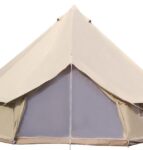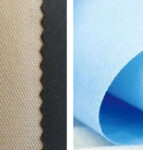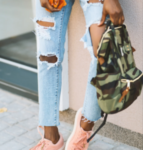Every so often, individuals have strong and varying opinions about what type of decoration to use in establishing their garments. This information will usually come in handy when picking apparel, primarily since the fabric itself affects the overall success of the final product/imprint.
Generally, the two most popular decorative techniques are embroidery and screen printing; for adding logos to apparel and clothing. So, what exactly is embroidery and screen printing?
Embroidery:
In the simplest of definitions, embroidery represents the process where a thread is stitched into a custom product. Usually, the most popular items when it comes to embroidery are jackets, corporate wear, golf shirts, and hats. Embroidery allows you to easily create a more professional look that is more durable than the standard inks as with screen printing.
With this technique, the logo is reproduced courtesy of directly stitching threads into fabric. Usually, the stitching process is fully automatic; a procedure that is done by computerized embroidery machinery. A great deal of the commercial embroidery machines features 12 or more sewing heads comprising up to 15 needles per head.
This is to say that it is possible to embroider 12 items simultaneously and the logo may use up to 15 different thread colors-a process known as digitizing. The final product is a logo file or program which can be uploaded to embroidery machines; subsequently instructing them what to stitch. Lastly, the machine operators then manually ?hoop’ and lad the garments onto the embroidery machines.
Why Embroidery?
The embroidery digitizing process is favorable for most fabrics provided; there is a correct type and amount of backing. Nonetheless, materials such as nylon, which are relatively stable and dense, are more embroidery-friendly and therefore mandate for little backing.
In essence, the more stable and denser a material is, the better the outcome. For instance, twill is quite a stable and dense material. Apparel comprising performance features can usually be slightly challenging. Such material is relatively easy to stretch, and as such, if you make your thread tensions too tight or pull it too tight, it can result in a lot of puckering.
In essence, too much stitching and too much density can result in some distortion.
Embroidery is quite costlier than screen printing although just like screen printing, the more pieces you do,
the lower the price. What’s more, pricing on embroidery is determined by how many stitches are on the
client’s logo as well as the total number of pieces to be embroidered.
Silk Screen Printing:
Screen printing otherwise known as silk screening is a particular printing technique suited for flat or
reasonably flat surfaces. With this technique, a logo is reproduced through squeezing inks mesh screens
directly onto the garment. Each color on the log mandates for a separate mesh screen and as such, designs
featuring numerous colors are relatively costlier compared to conventional single color designs. Similar to
embroidery, this procedure has also been partially automated although garments are manually loaded and
unloaded by the machine operator. After printing, every garment travels through a tunnel dryer that sets or
cures the print.
Why Silk Screen Printing?
Identifying whether screen printing is the appropriate application, it is, to begin with, the intended use of the garment and fabric type. Some of the perks of screen printing over embroidery include the fact that screen printing allows you to create high end designs with gradients and shading. What’s more, it is relatively inexpensive if you print many similar items. If you are attempting to recreate a very detailed logo, then screen printing is the best option. With screen printing, you may also incorporate numerous different effects in your logo inclusive of distressed effects that are quite popular in band t-shirts through the use of screen printing. These effects are nonetheless possible courtesy of embroidery. When it comes to pricing in screen printing, prices are determined by the total number of items being printed with a similar custom design and the number of colors being used. Some popular products that use screen printing include t-shirts, tote bags, and team uniforms among many other numerous examples.
In Summary
Although either of these techniques will usually yield a somewhat different outcome, both methods are
verified and genuine garment decoration techniques. The difference between them is typically insignificant
and can be compared to painting and sculpture.
Either way, you’ll end up with a work of art, or maybe just a buddy’s face on a shirt.



